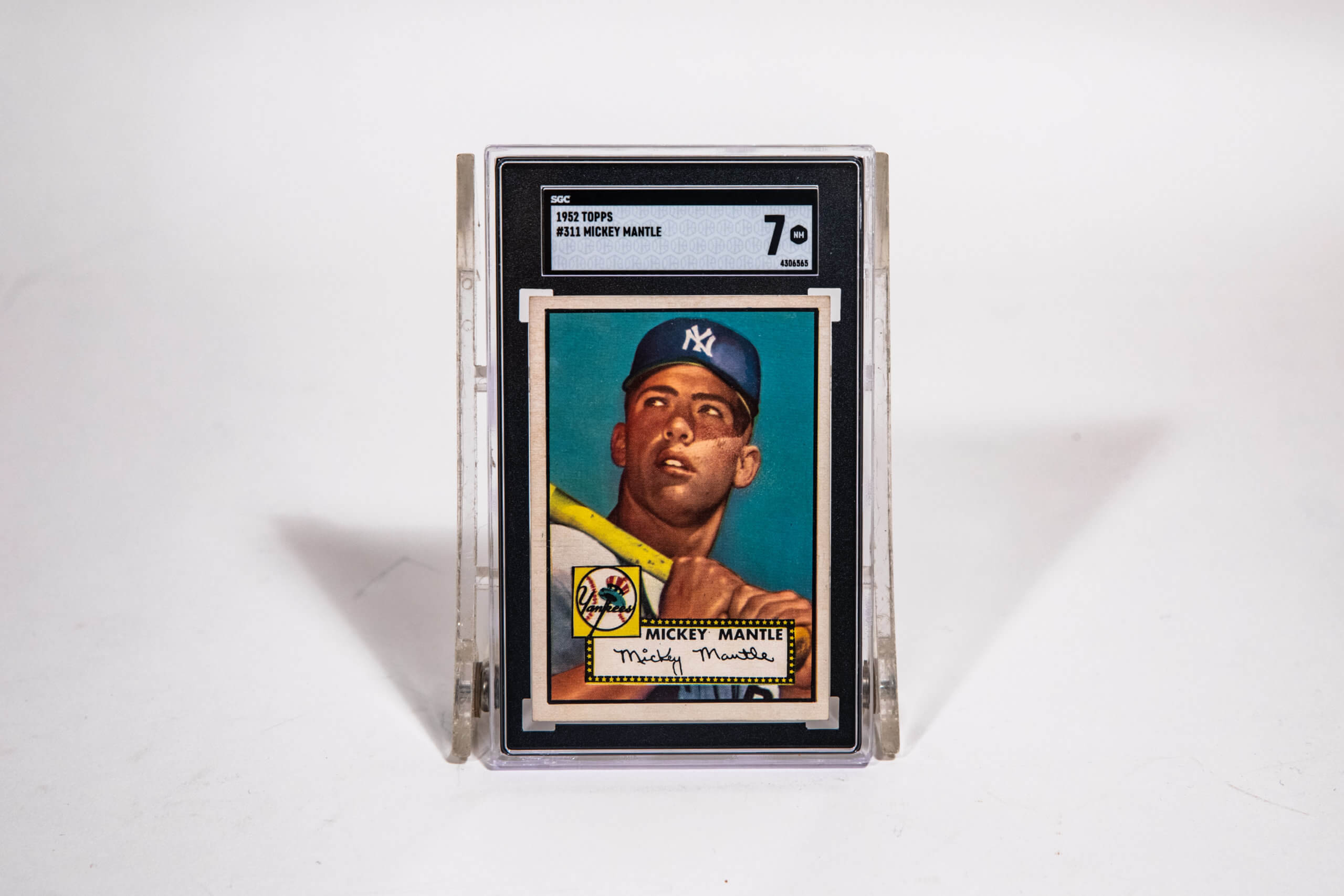Blog > Stories
Mutant Moneyball: A Data Driven Ultimate X-Men
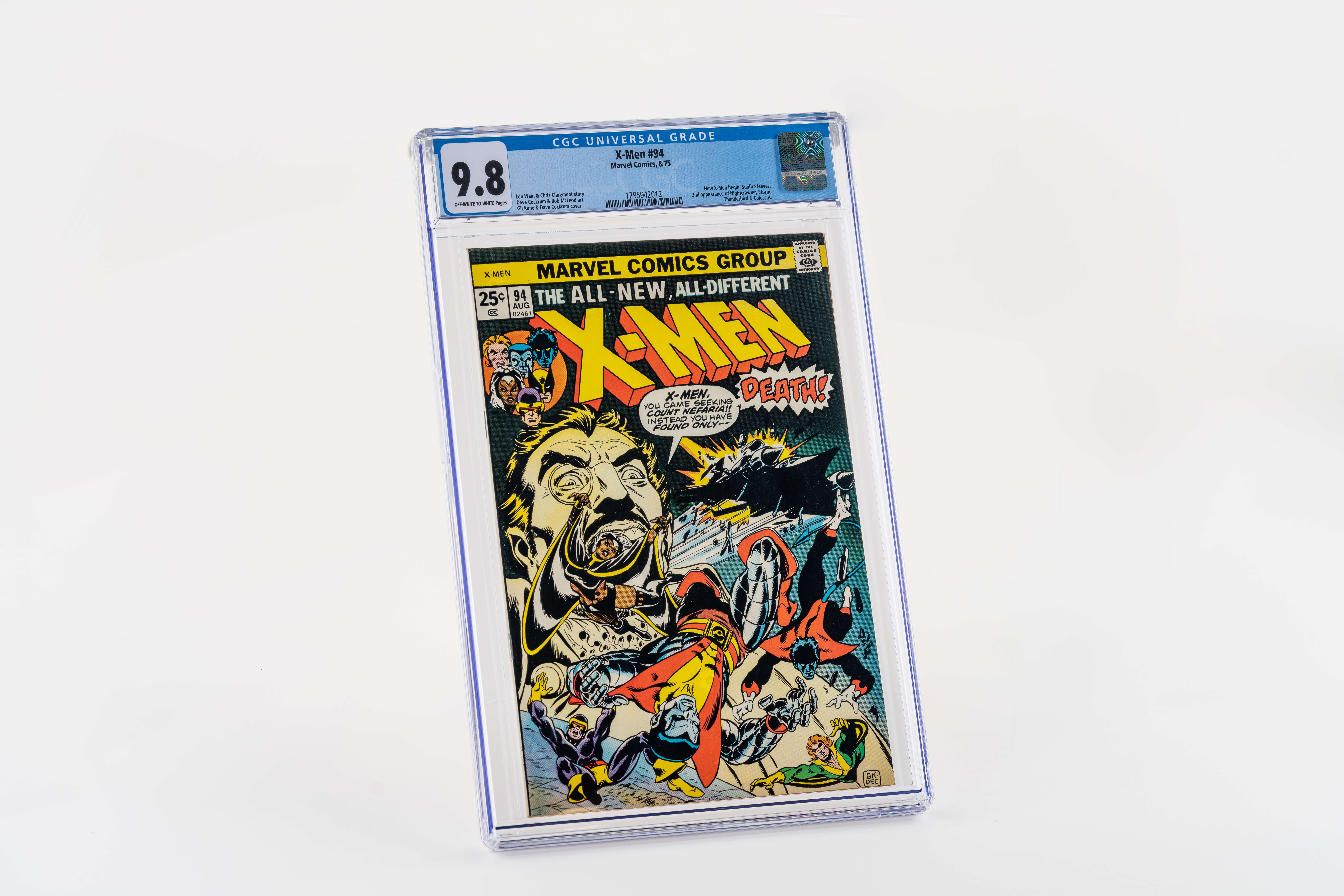
Blog > Stories
Mutant Moneyball: A Data Driven Ultimate X-Men

Era by Era: Most Valuable Mutants
The 1960s
This was the first era of the X-Men, and represents the highest value era. These Silver Age X-Men comics are published in Marvel’s early days, and by referencing sales from 1963 through 1969 as Comichron has done, there are (interestingly) no self-titled superhero comics in the top 40 sales in 1963 at all. In 1964 Action Comics showed up, but even this comic doesn’t call out Superman by name.
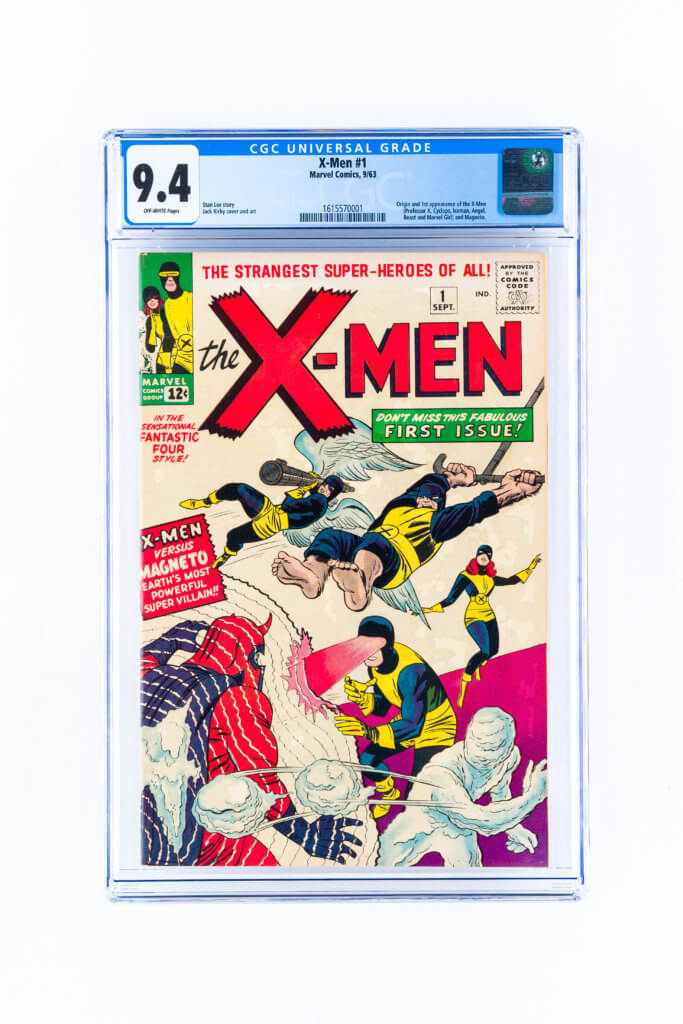
X-Men, which did finally hit the top 40 in 1966, had an estimated per issue sales number of around 220,000. Compare that to the best selling comic of the nineties: 1992’s X-Men number 1, which is the Guiness-record-breaking best-selling comic book and moved around seven million issues. Given this context, it should come as no surprise that early X-Men issues are extremely rare.
As mentioned earlier, the X-Men were created by Stan Lee and Jack Kirby. Two years before they created X-Men, they’d knocked it out of the park with The Fantastic Four. Spider-Man was created by Lee and Kirby in ‘63 just like X-Men. People loved these other titles right out of the gate, but the X-Men, for all intents and purposes, were considered a flop, and this consideration wouldn’t change until well into the 1970s.
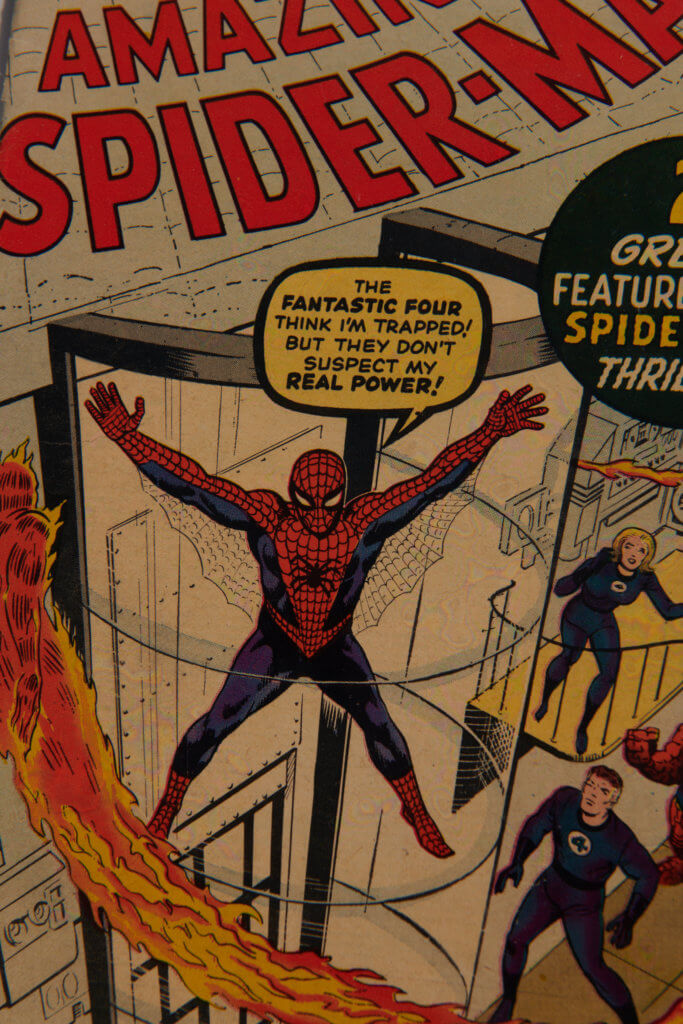
The 1960’s data is the least-variable of any of the eras we’re analyzing because almost every issue features the same core X-Men team: Cyclops, Marvel Girl (Later known as Jean Grey and The Phoenix), Beast, Angel, and Professor X. Members such as Havoc, Polaris, and on-again/off-again villain-cum-ally Magneto make a number of appearances during this era too. But, for the most part, all primary characters appear in almost every issue.
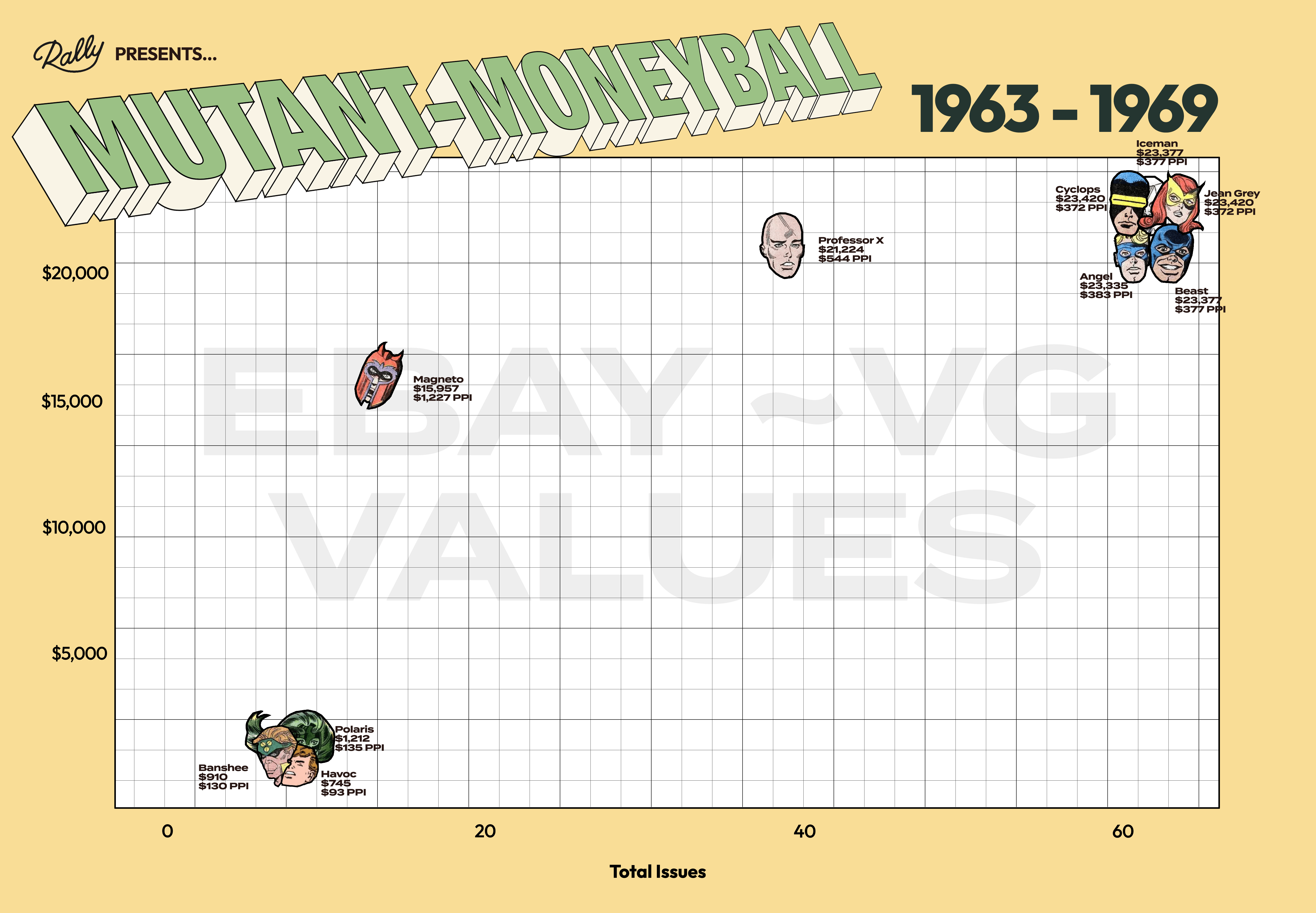
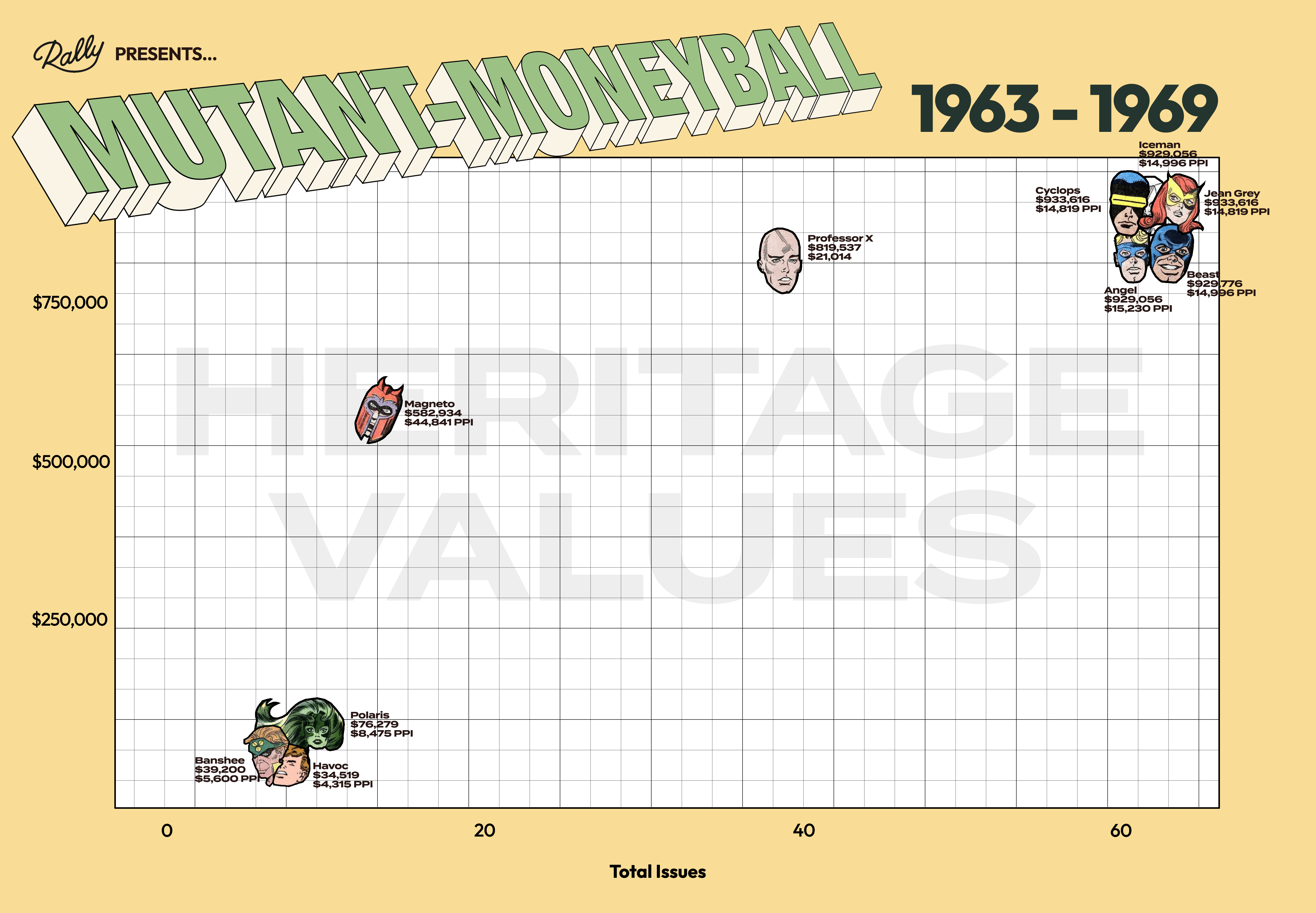
Most Valuable Mutant: Eric Magnus (Magneto) with an average $1,227 dollars per issue (Declared VG condition) / $44,841 per issue (Graded 9.6-9.9)
Least Valuable Mutant: Alex Summers (Havoc) with an average $93 dollars per issue (Declared VG condition) / $4,315 per issue (Graded 9.6-9.9)
Most Valuable Comic: X-Men #1 with a value of $12,500 (Declared VG condition) / $492,938 (Graded 9.6-9.9)
The 1970s
The first few years of the 1970s feature a lot of reprinted X-Men issues. Because sales of the series were so poor, the series was canceled with X-Men #66. Nine months later Marvel would begin publishing the title again, but instead of creating new stories, earlier issues were reprinted all the way up to X-Men #93 (uncannyxmen.net). This represents two essential points:
- The collectibility of X-Men was low compared to other popular titles, with readers seeing the title as an unpopular, low stakes title.
- A clearly illustratable reason for why the X-Men titles just before #94 are so much less valuable than X-Men #94.
In 1975, Marvel’s Editor in Chief Len Wein along with illustrator Dave Cockburn decided to relaunch the X-Men title with the release of Giant-Size X-Men #1. Aptly titled Second Genesis, this book didn’t kill off or ignore the original X-Men, but instead brought aboard an entire new team, with hopes of bringing diversity of gender and nationality to a Marvel title as the publishing company had seen a rise in international readership. A young associate editor, Chris Claremont was pulled in to help Weinman write about a living island known as Krakoa. Claremont immediately believed that he was the perfect writer for this series and while Marvel heads loved the idea for a relaunch of X-Men, they poo-pooed Weinman’s suggestion for a quarterly title and asked for a bi-monthly. The overworked editor-in-chief felt he had no choice but to turn the title over to the desperate Claremont, and with this fateful decision, the X-Men would have a champion that would lead them to record-breaking success.
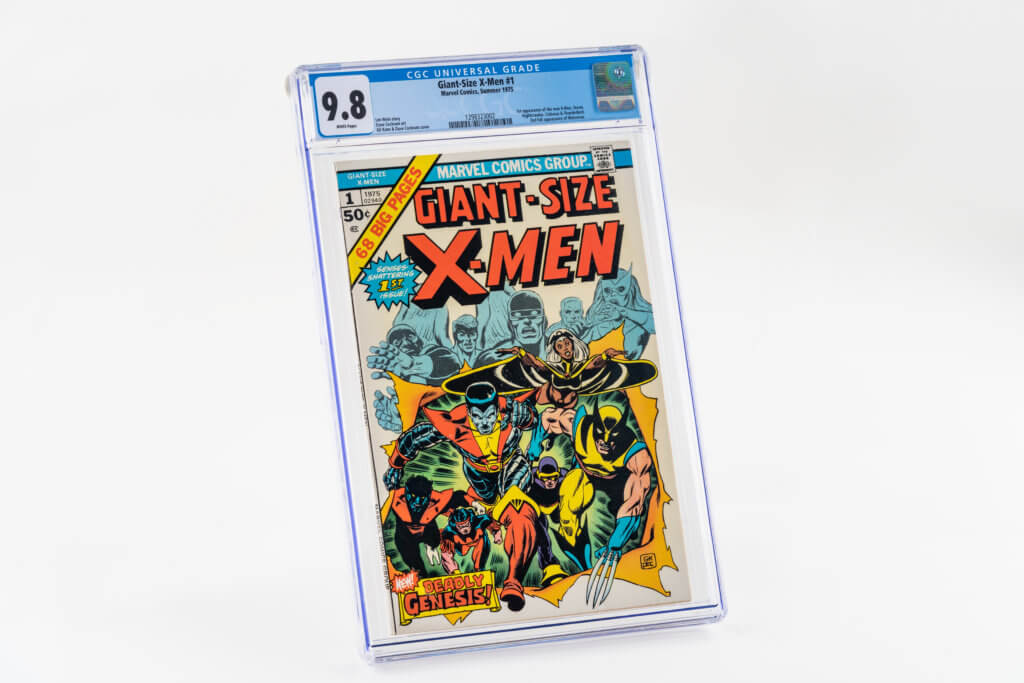
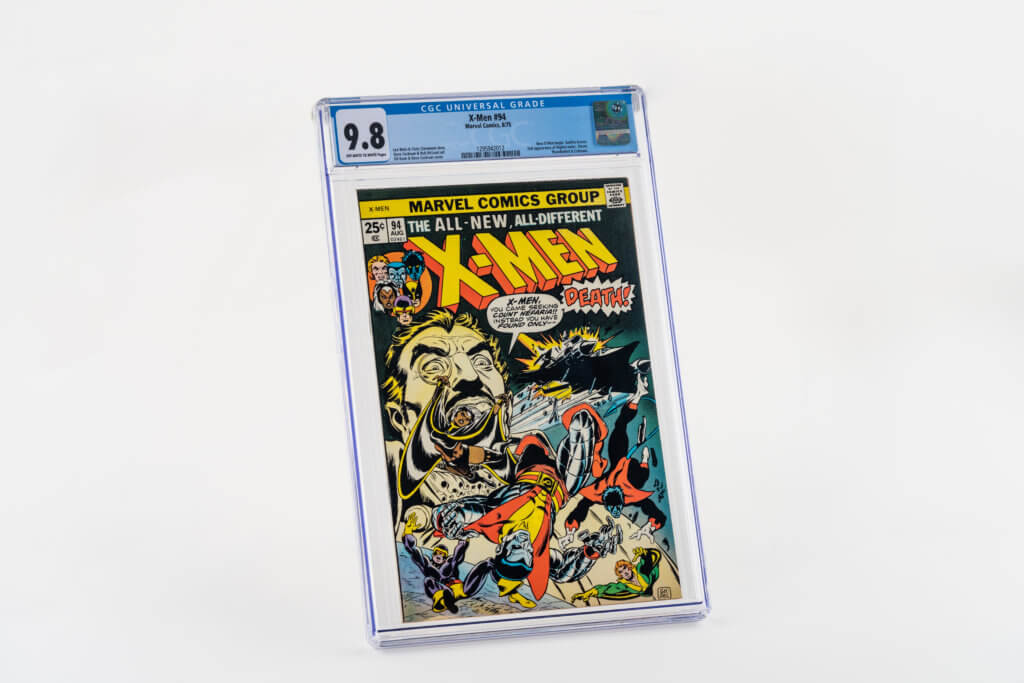
Most Valuable Mutant: John Proudstar (Thunderbird) with an average $791 dollars per issue (Declared VG condition) / $46,126 per issue (Graded 9.6-9.9)
Least Valuable Mutant: Hank McCoy (The Beast) with an average $32 dollars per issue (Declared VG condition) & Eric Magnus (Magneto) with an average of $497 per issue (Graded 9.6-9.9)
MVC (MOST VALUABLE COMIC): GIANT-SIZE X-MEN #1 with a value of $1580 (Declared VG condition) / $72000 (Graded 9.6-9.9)
RUNNER UP: Issue #94 with a value of $700 (Declared VG condition) / $65,000 (Graded 9.6-9.9)
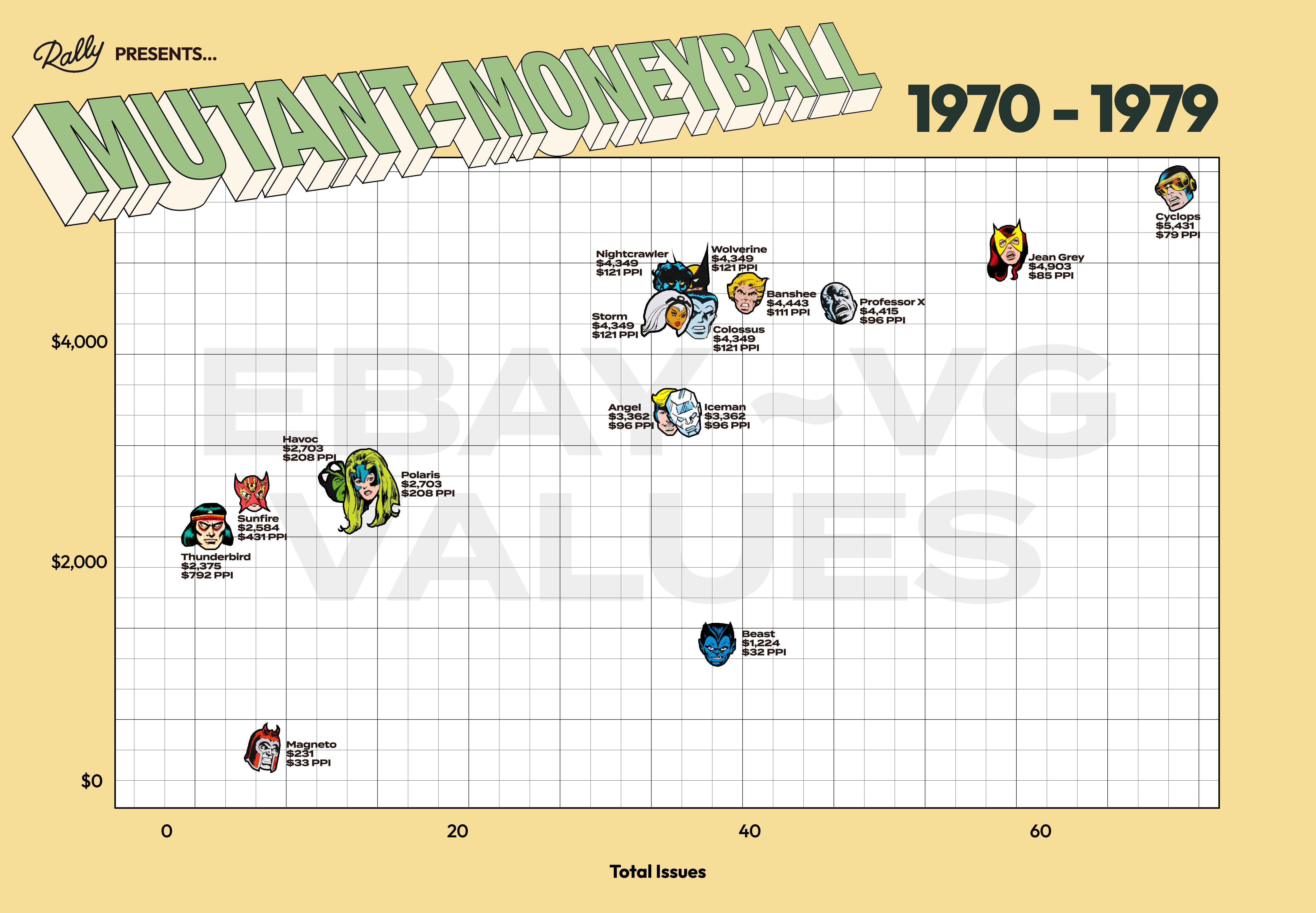
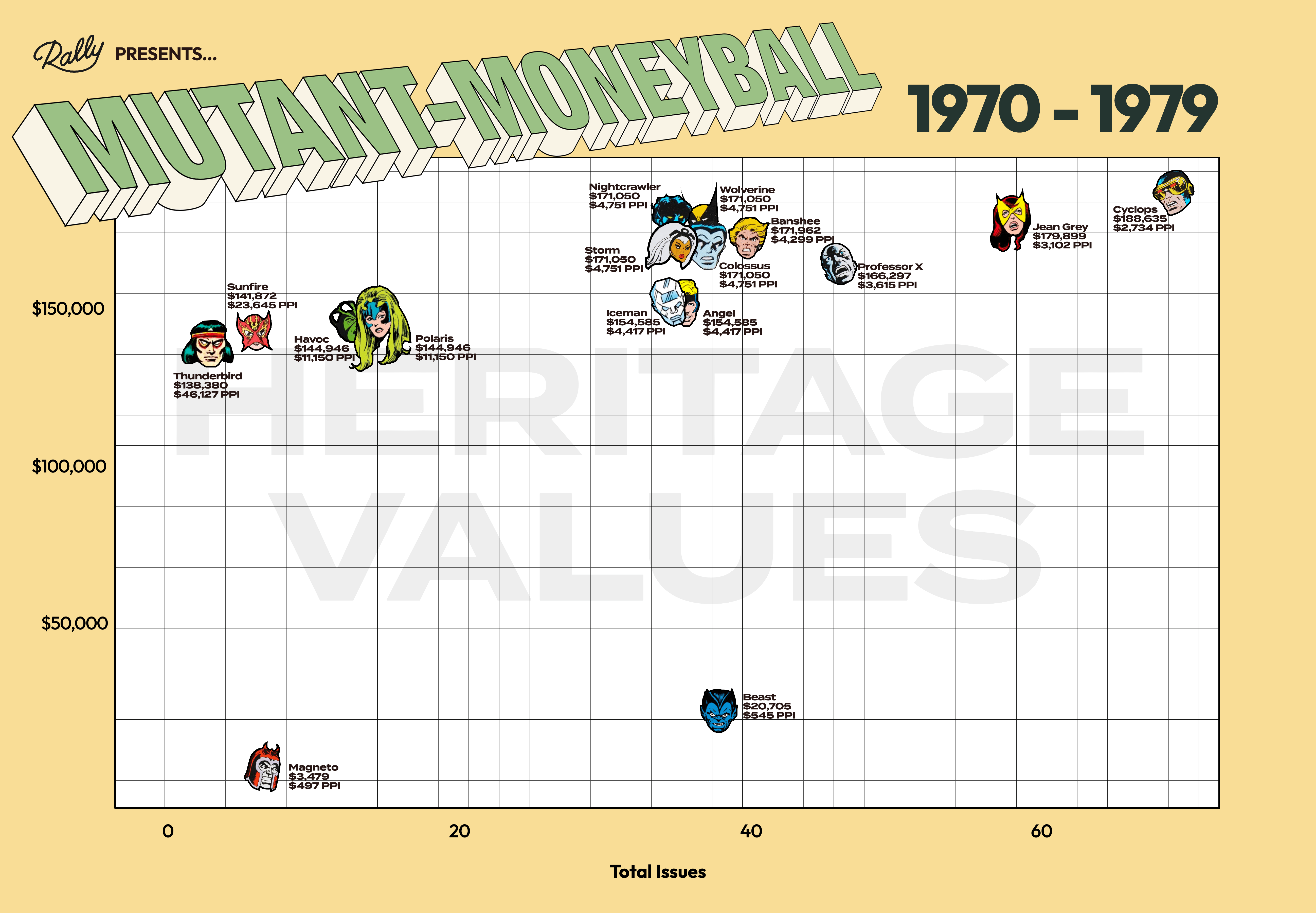
“Billy, this is Chad Bradford. He’s a relief pitcher. He is one of the most undervalued players in baseball. His defect is that he throws funny. Nobody in the big leagues cares about him, because he looks funny. This guy could be not just the best pitcher in our bullpen, but one of the most effective relief pitchers in all of baseball. This guy should cost $3 million a year. We can get him for $237,000.”
Peter Brand, Moneyball






